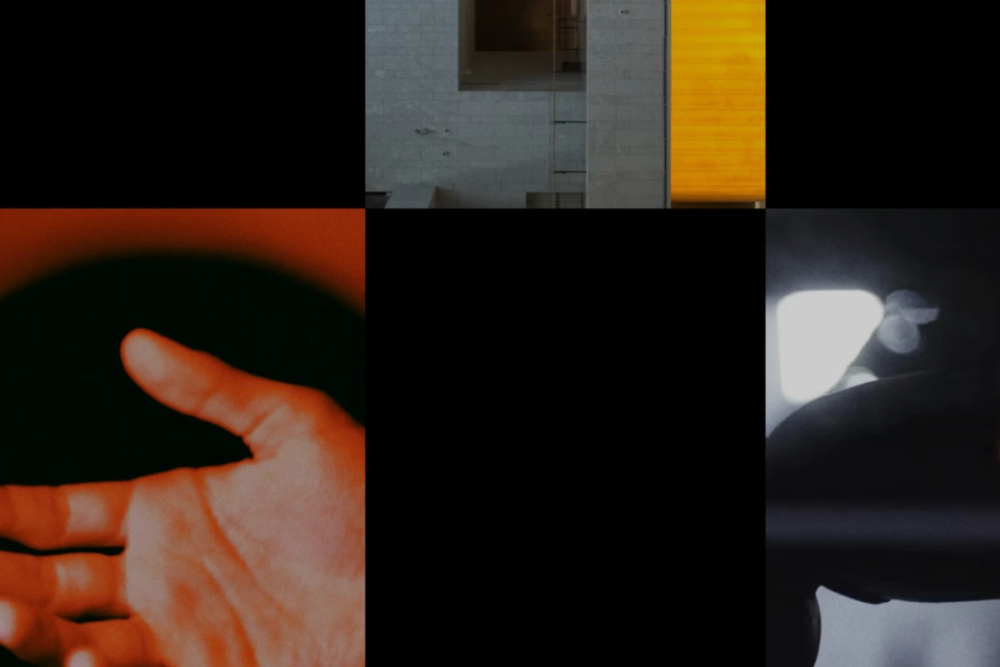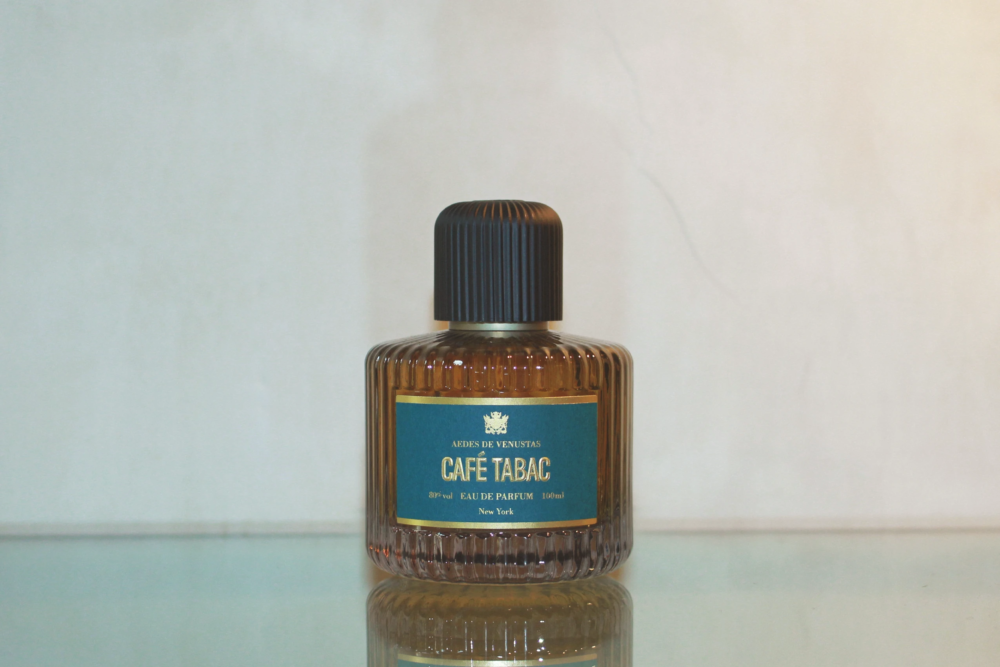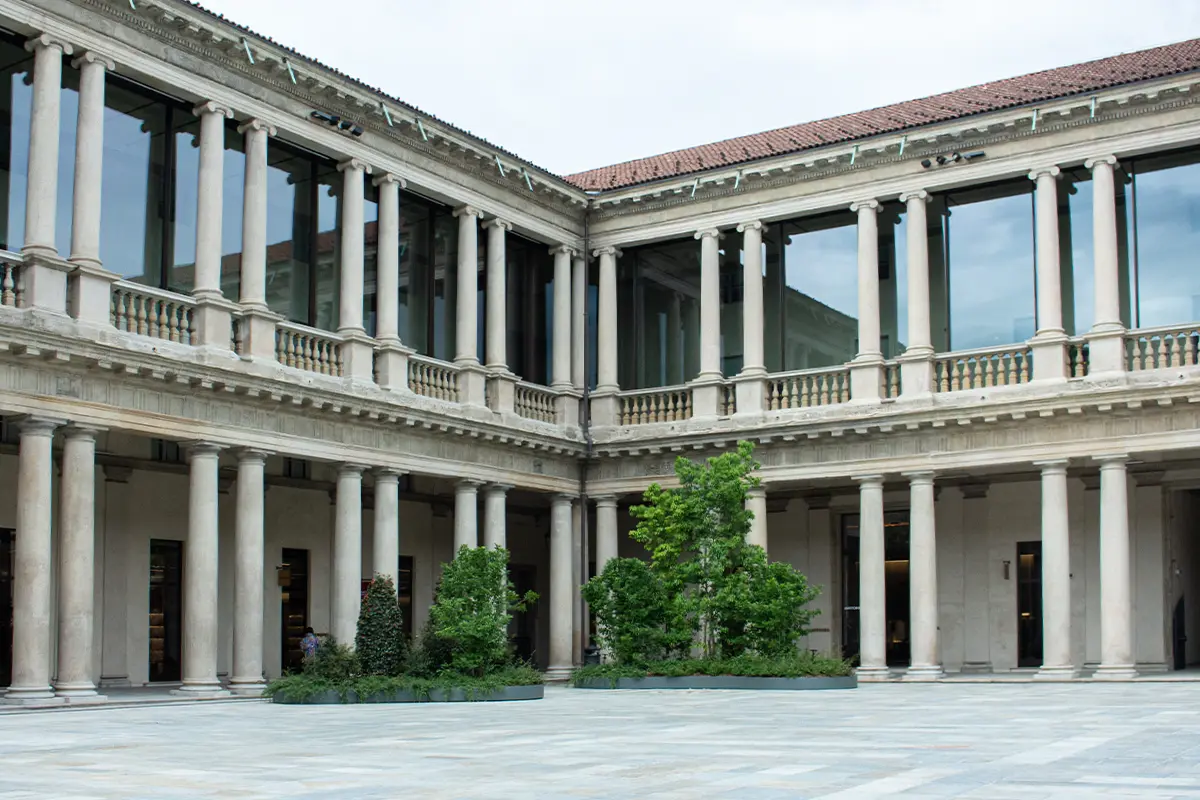
Portrait Milano: Reviving the Soul of Milan’s Historic Citadel
Portrait Milano: A journey from the Counter-Reformation to modern Milan, where Baroque influences, Michele Bönan’s vision, and Ferragamo’s innovation converge to redefine a historic seminary cloister
Pastry Chef Cesare Murzilli has transformed six iconic archive models of Salvatore Ferragamo shoes into cakes
Six iconic archive models of Salvatore Ferragamo shoes serve as a source of inspiration for color, craftsmanship, and ingenuity for Pastry Chef Cesare Murzilli, who has transformed them into exquisite cakes. Starting today, these creations will be featured on the menu at the 10_11 Bar Giardino Ristorante at Portrait Milano. Each dessert in the inaugural Cake Couture collection is a tribute to the timeless design of Ferragamo’s pioneering creations from the 1930s to the 1950s, now preserved at the Salvatore Ferragamo Museum in Florence.
Dama: a classic cake, soft and light, entirely hand-covered with colorful chocolate plaques. It evokes the joy and vibrancy of Harlequin from the Italian commedia dell’arte, reflecting Ferragamo’s eclectic taste for color.
Rainbow: inspired by the famous sandal with a cork heel and platform wrapped in vibrant hues, a symbol of innovation and boldness in the 1930s. The cake is a playful and colorful layered delight.
Avanguardie: a nod to Ferragamo’s visionary approach with his painted wooden wedge. It is reimagined as a modern tart filled with custard cream, recalling the designer’s Neapolitan roots.
Damigella: dedicated to the elegant boot created in 1957 for Sophia Loren. The namesake cake combines external sophistication with internal complexity, featuring layers of cocoa and coffee textures.
Iride: inspired by the lace-covered Tavarnelle pump adorned with silk decorations, dating back to the 1930s. This cake transforms into a zabaglione-flavored masterpiece, both refined and indulgent.
Argo: celebrates the art of manual decoration, blending painting and embroidery in the footwear masterpiece. Its pastry reinterpretation features lightness and diverse textures, showcasing the heights of modern patisserie artistry.
This latest initiative by Portrait Milano offers yet another opportunity to immerse oneself in an iconic Milanese location, where the city opens up to the public while preserving a unique sense of intimacy. A place steeped in history, marked by architecture that tells the story of past eras, now reimagined with a contemporary spirit.
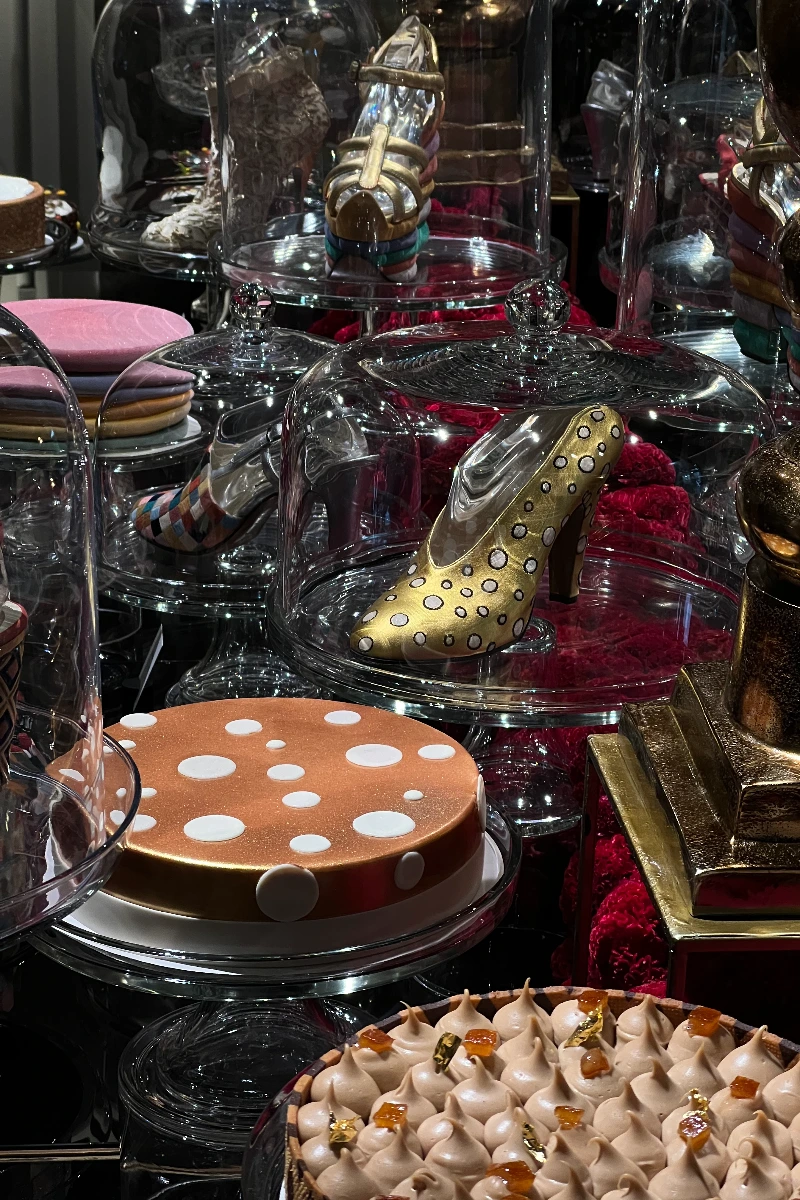
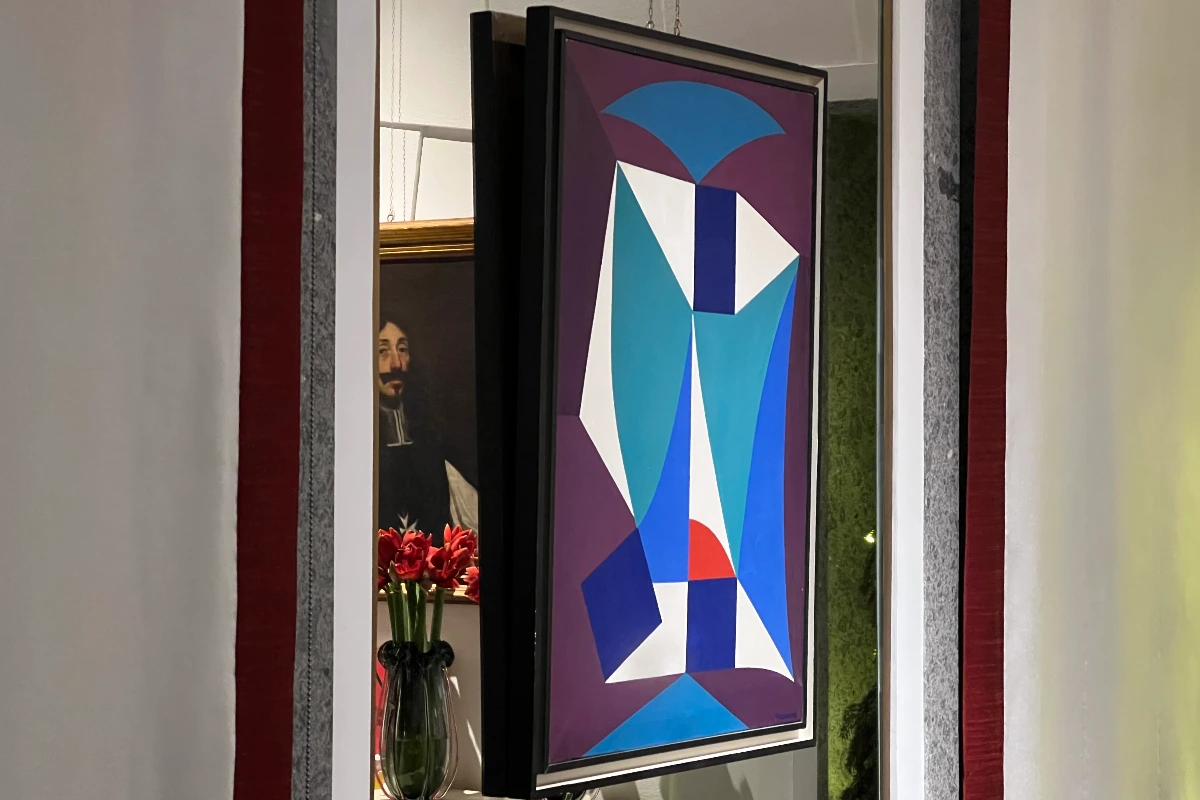
The Portrait: From Archepiscopal Seminary to Luxurious Hotel in Milan
What was once the archiepiscopal seminary in the heart of Milan—an austere stronghold dedicated to religious education and training located between Corso Venezia, Via Bagutta, and Via Sant’Andrea—has transformed into the Portrait, a hotel under the Lungarno Collection, a hospitality branch of the Ferragamo Group.
The structure’s dimensions are colossal, with a double-columned cloister extending along all four sides of a vast stone-paved square, now restored for public use. This long-overlooked site, imbued with symbolic significance for the Lombard capital, now shines in a city undergoing rapid metamorphosis.
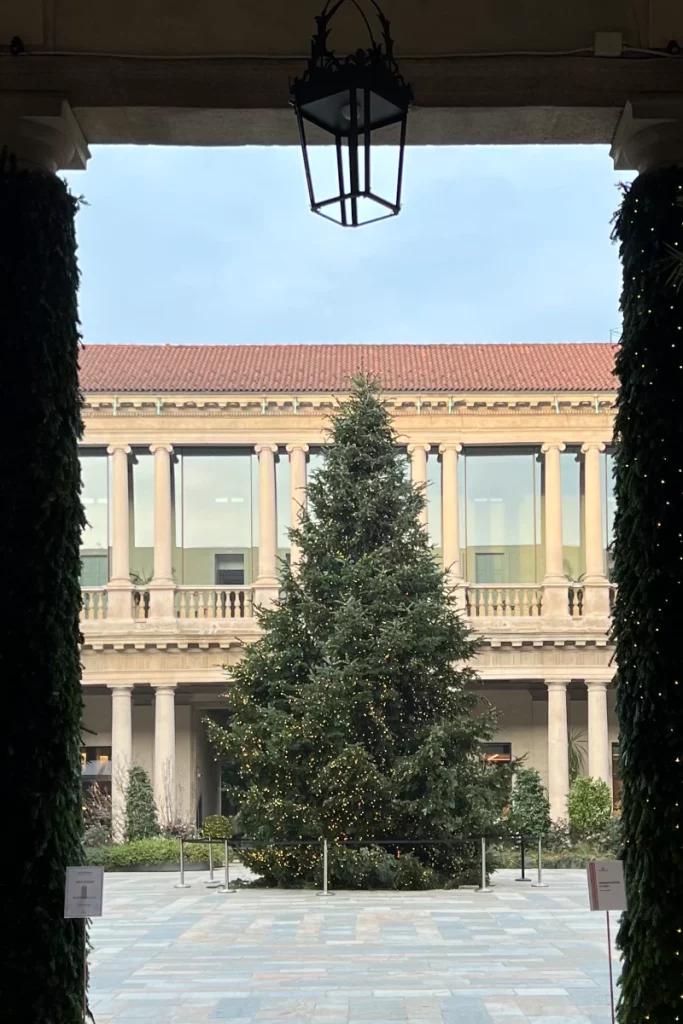
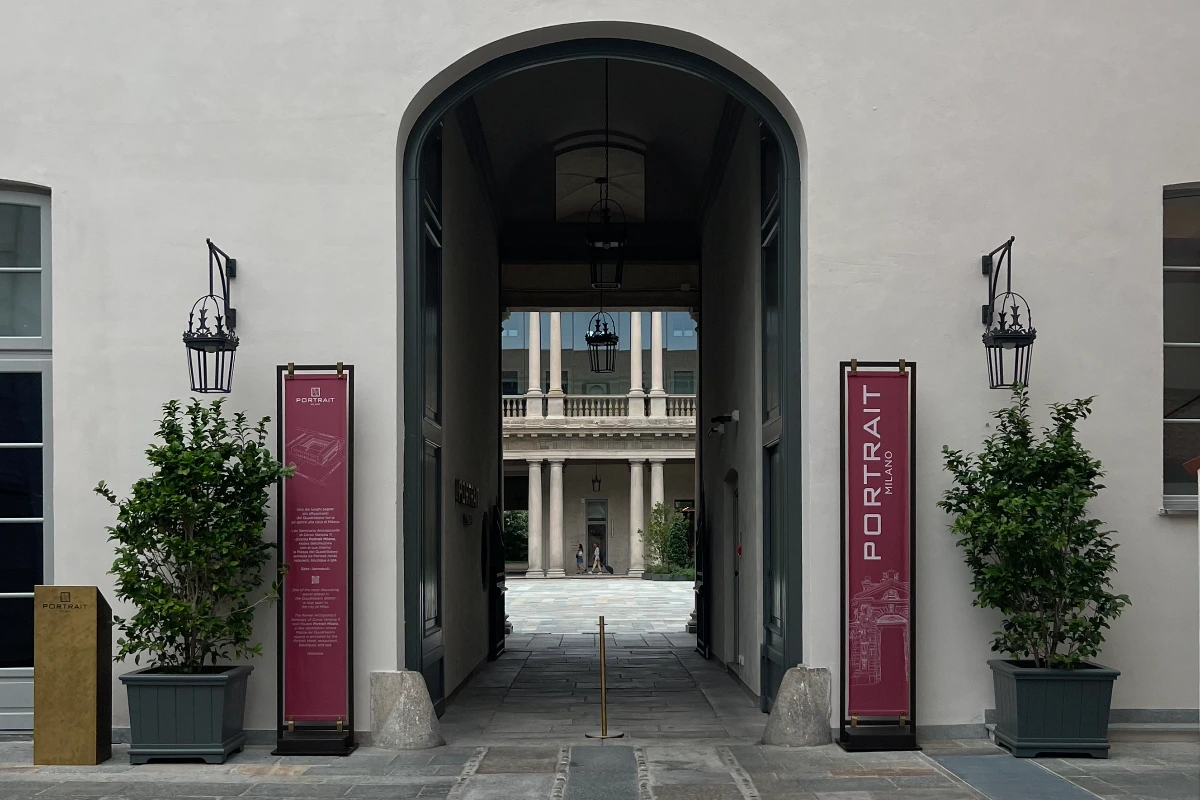
A Historic Citadel of Art, Culture, and Spirit in Spanish Milan
Entry is through a rusticated Baroque portal at 11 Corso Venezia—a feature that immediately proclaims the cultural and spiritual origins of this citadel, born during a period of intense artistic, cultural, and architectural activity in Spanish Milan.
Above the portal, the Borromeo family motto, “Humilitas,” is inscribed in Gothic script. Originally conceived as a seminary by St. Charles Borromeo at the height of the Counter-Reformation in the late 16th century, the building later served as a military hospice, a prison, and a hospital. Up until the 1990s, part of the structure housed Mario Bellini’s design studio.
The Revitalized Cloister of Milan’s Palazzo del Seminario
Encircling the vast 2,800-square-meter cloister, revitalized by Michele De Lucchi and his AMDL Circle studio, are boutiques such as Antonia—a 750-square-meter space designed by Vincenzo De Cotiis—and SO-LE Studio, the first flagship of Maria Sole Ferragamo’s jewelry brand, which transforms discarded materials into wearable art. These establishments add a layer of sophisticated retail to an area already enriched by cafés and dining options, notably the casual eatery 10_11. The restaurant offers a mixology-forward aperitivo and a menu inspired by traditional Lombard cuisine.
10_11, designed by Michele Bönan, features three distinct settings: bar, garden, and restaurant. Outdoors, striped curtains from Bönan’s interiors collection echo the ceiling patterns, while rattan armchairs and lanterns create an inviting connection between the interior and the lush garden enclosed by historic brick walls. For a more indulgent experience, Beefbar—Riccardo Giraudi’s gastronomic concept—specializes in premium meats and marks its Italian debut here.
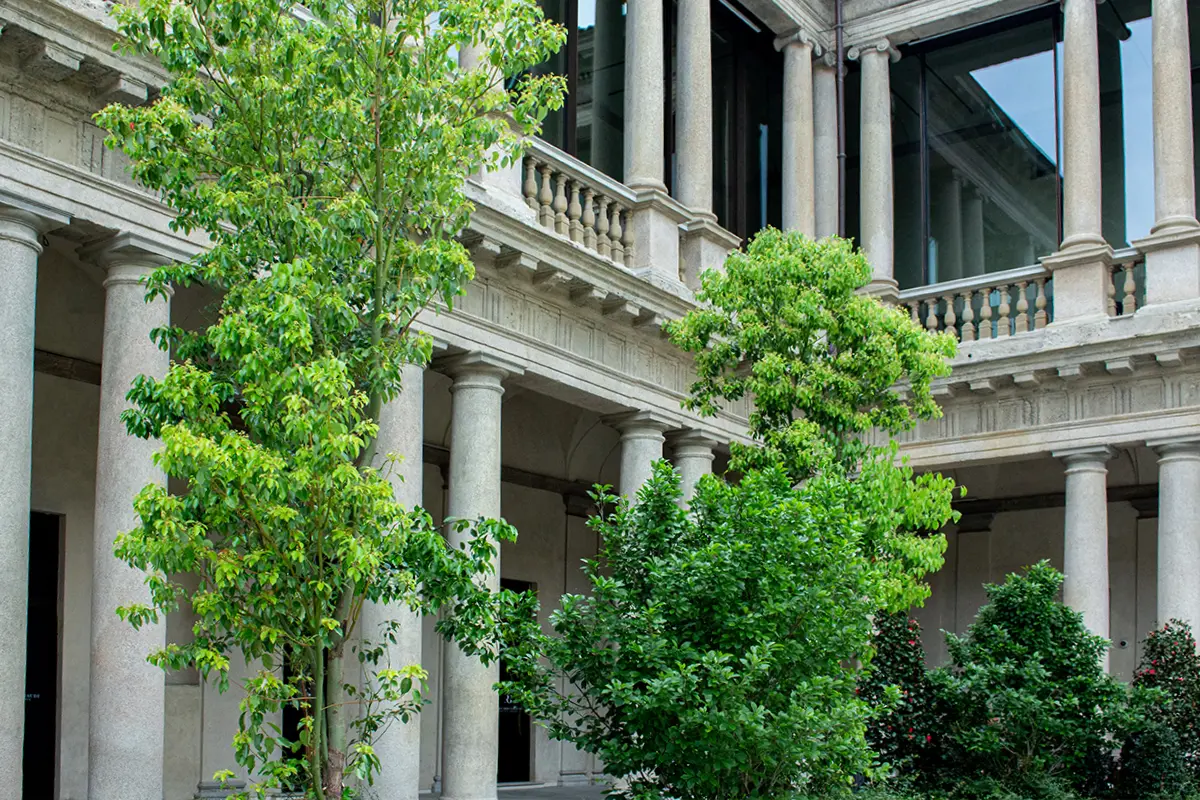
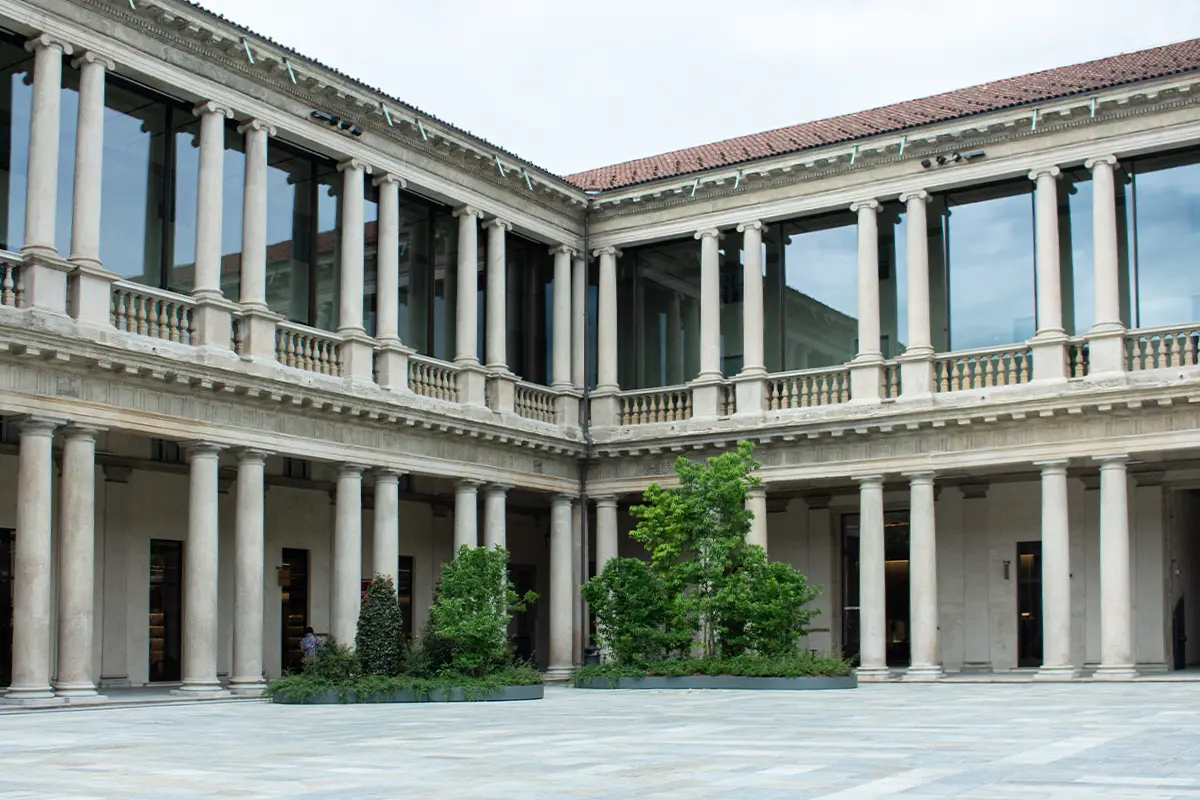
The Humbert & Poyet Interior Project at Portrait Milano
French duo Humbert & Poyet, tasked with the interior design, drew inspiration from early Milanese design pioneers like Luigi Caccia Dominioni and Osvaldo Borsani, who co-founded Tecno in 1953. Still nearing completion, the Longevity Suite—Portrait’s spa featuring a pool—promises an immersive wellness experience.
The restoration of the central square has created a new axis within Milan’s Quadrilateral, linking Corso Venezia directly to Via Sant’Andrea. ”Portrait hotels aim to celebrate the history, quality, and values of the cities they inhabit,” says Leonardo Ferragamo, chairman of the group.
Michele Bönan’s Renovation of Portrait Milano: An Interplay of Elegance and Artistry
The entire renovation and décor project for the hotel’s interior was entrusted to Florentine architect Michele Bönan, who over the years has built a solid working relationship with the hôtelier group and is linked by a long friendship with the Ferragamo family.
Bönan, designer and artistic director of Portrait Milano, has vivified interrupted or dulled roots, elaborating the imprinting with sublimated quotations and spaces of intimate and luminous solemnity, overlooking the central stalls or the walled garden behind. The rhythm unfolds in a succession of agile, mighty and sculptural spatialities.
A Fusion of Vintage and Modern: The Design of Portrait Milano’s Interior by Michele Bönan
Entering the vaulted hall that houses the reception desk, one is immediately drawn to the wrought copper counter set within a rectangular niche, seemingly suspended by diffused light that pierces the masonry. A long central table, inspired by the ‘fratine’ of Michelucci and Tempestini’s Tuscan rationalism, combines art, fashion, and design books with vintage objects, ceramics, bronzes, and glass.
Occupying the entire side wall opposite the entrance is a 1950s plaster fractal relief by French sculptor Denis Morog. The oversized sofa, écru seating, and lamps, along with the geometrically patterned carpet in shades of brown, sand, black, and turquoise, were designed by Michele Bönan to complement the room’s lofty and accentuated proportions.
Throughout the hotel, the furnishings mix vintage pieces from the ’50s, ’60s, and ’70s with custom creations from Bönan’s studio. These elements balance rigorous composition and volume, creating a dynamic tension. The boiseries, featuring projecting weaves, nod to the understated luxury of Portaluppi and Tomaso Buzzi, as seen in the nearby Villa Necchi Campiglio, but with a more streamlined and modern linearity.
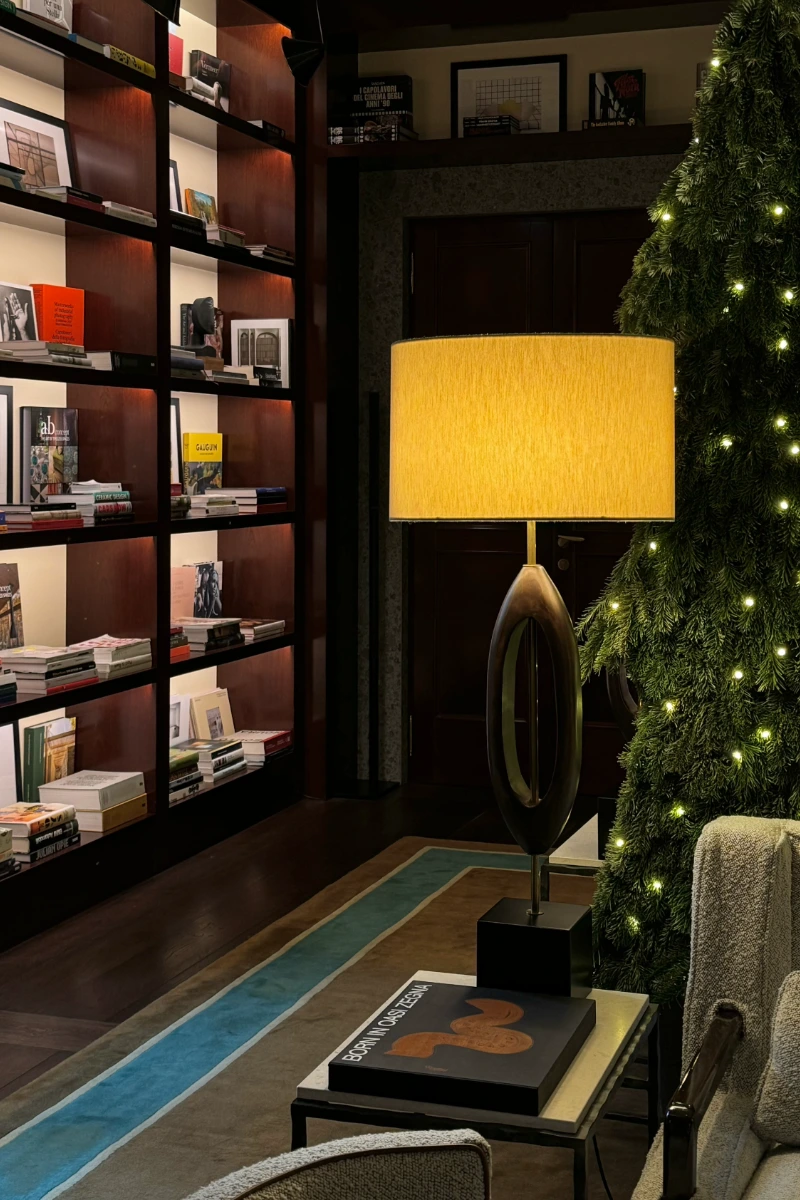
The Grand Restoration: Exploring the Interiors of Portrait Milano Hotel
In the library, nearly flat, rotating elliptical granite columns serve as movable partitions, directing views and pathways within the common areas on the first floor. Ancient fireplaces with lapidary cornices are mirrored by scattered touches of purplish red—the cardinal color—that accentuate the space. Green serves as the second chromatic protagonist, a complementary combination that evokes the refined atmosphere of 1950s bourgeois décor.
A balustraded staircase, lit by four carefully restored openings, leads to the second floor, where the solemnity of the space is underscored by the still-visible episcopal insignia. Oversized glass windows, gliding silently on bronze hinges, transform the enormous loggia with Ionic capitals into a jardin d’hiver that runs seamlessly along all four sides of the cloister-square. Elegant flared corbeille stone fountains from the 1930s are integrated into the perimeter walls of the loggia.
Mario Ceroli’s black wooden thrones and more casual wicker and rope armchairs, designed by Michele Bönan Interiors, reveal the two intersecting spirits of this extensive, years-long project.
Exploring the Fusion of Past and Present in Portrait Milano’s Rooms and Suites
In the 73 rooms and suites on the second floor, ranging from 32 to 165 square meters, the dialogue between past and present is most evident. Four-poster beds with geometric embroidery inspired by the Baroque era of 17th-century Milan are paired with light straw and rattan textures, rosewood, and blond walnut-paneled walls. Alternating with these are backlit bookcases, which provide both utility and ambiance.
Stone frames adorn the doors, while the bathrooms—one of Michele Bönan’s specialties—are clad in Apuan Calacatta marble, featuring chrome steel faucets with retro flair. Curtains are crafted from Dedar fabrics. A 1950s and 1960s aesthetic influences the furniture and carpets, while large shower compartments are designed as full rooms, floored with single slabs of Carrara marble. Devon&Devon tubs with a retro charm alternate in other spaces.
Leather and bronzed brass handles, made by Florentine artisans, adorn the doors. Vintage lamps and ceramics, sourced from antique dealers and Parisian markets, enhance the nostalgic charm. Natural larch plank floors are complemented by moss green or garnet carpets with patterns inspired by mid-century rationalism and ’70s design, bordered in crisp white. In the suites, the color palette shifts to softer hues, including browns, camels, rope, butter, and ivory, accented by cardinal purple.
The result is a true Portrait of Milan—a moodboard blending inspirations and nuances from centuries of history into an environment of rarefied comfort and aesthetic osmosis. Antique armchairs in crimson velvet, studded neoclassical chairs, and abstract sculptures mingle with paintings and informal graphics, creating evocative dialogues throughout the space.
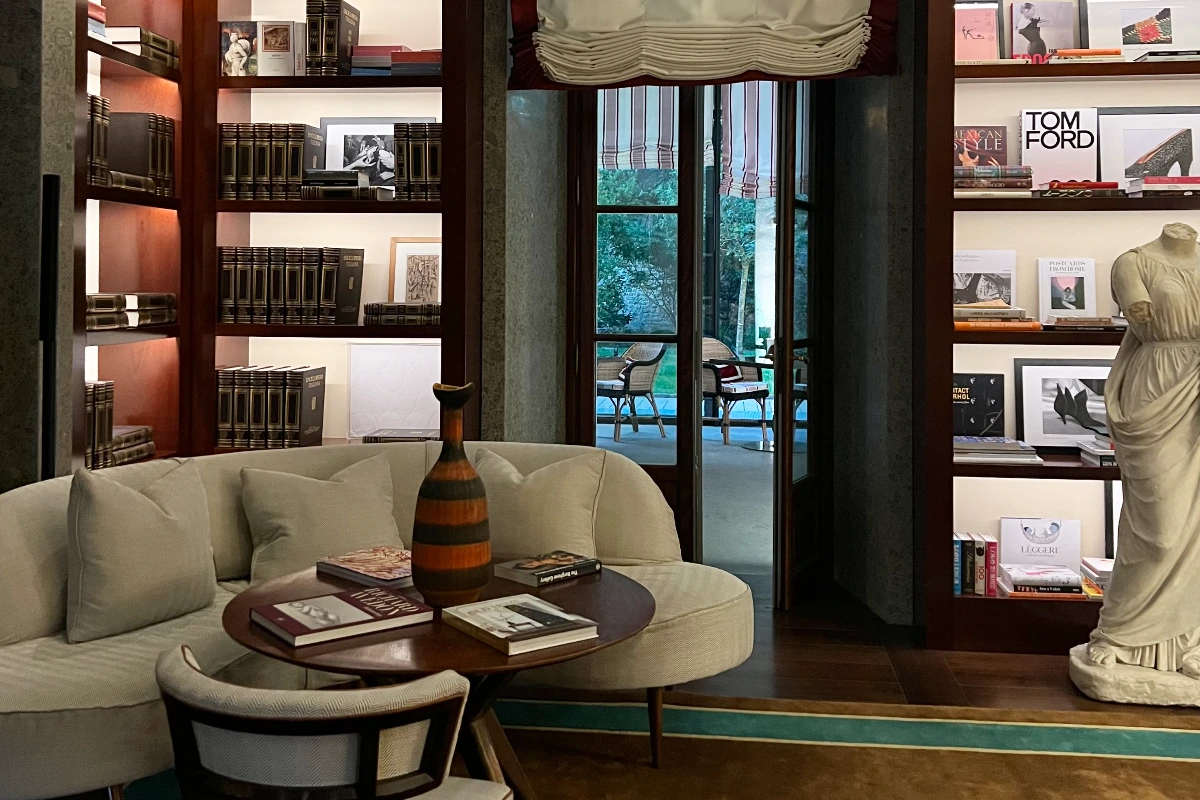
Portrait: A Blend of Milanese History and Fashion at the Former Seminary Turned Boutique Hotel
Finally, the Portrait pays tribute to Made in Italy and Milan’s legacy as the ‘City of Fashion,’ evoking one of its most iconic figures, Salvatore Ferragamo. Photographs, patents, and sketches narrate his journey, showcasing his innovative designs, which resemble blueprints for futuristic architecture translated into ergonomic masterpieces.
Michele Bönan often cites Ferragamo, referring to him as a personal inspiration. Ferragamo’s legacy, supported by the vision and advice of Wanda Ferragamo, continues to influence Bönan’s work, particularly in this Milanese endeavor.
”Realizing a project is like the materialization of a dream,» Bönan explains. «The Portrait dream was fulfilled through an alchemy of carefully blended elements. Like a jigsaw puzzle, each piece had to fit perfectly, creating a unified harmony. Portrait was simultaneously a challenging and straightforward project—the ingredients were clear from the start: Milan, the Seminary envisioned by the extraordinary Saint Charles Borromeo, and the Ferragamo Maison. And poof—there goes the magic.”
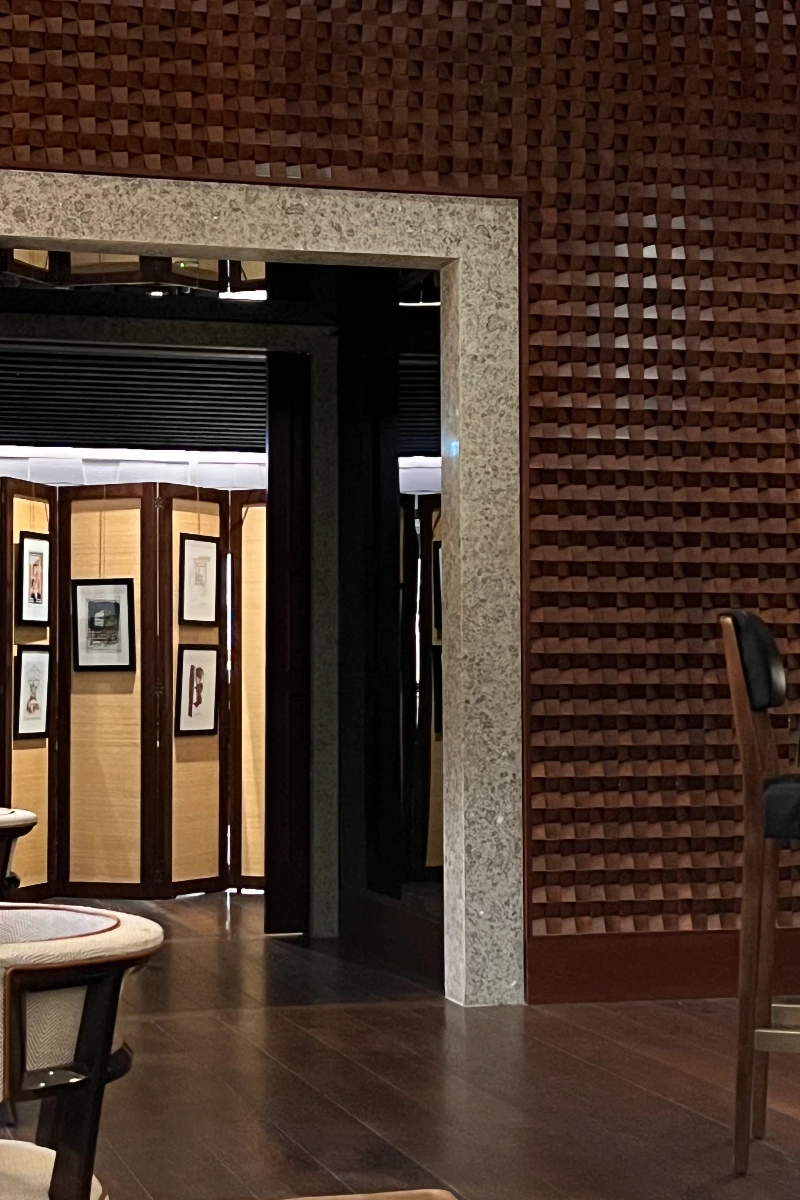
10_11: A Culinary Intersection of Tradition and Modernity in Milan
Nestled within the Portrait Milano, the restaurant 10_11 embodies a rich narrative of Milanese gastronomy, where tradition meets contemporary flair. The name “10_11” reflects its unique location at the junction of Via Sant’Andrea 10 and Corso Venezia 11, symbolizing the convergence of two distinct souls of the city. Here, intimacy and exclusivity blend seamlessly with a welcoming and inclusive ambiance.
The Culinary Vision of Luigi Cinotti
At the helm of the kitchen is Executive Chef Luigi Cinotti, who stepped into the role in 2023 after joining the 10_11 team as Sous Chef in 2021. Hailing from Tuscany, Cinotti’s approach is deeply rooted in his upbringing, shaped by family gatherings and the traditional olive harvests of his homeland. These early experiences instilled in him a passion for conviviality and a love for “old-school” Italian cuisine.
Cinotti’s professional journey took him to the UK, where he spent six years refining his craft in esteemed hotel kitchens. Upon returning to Italy, he sought to delve deeper into the culinary heritage of his own country. At 10_11, he champions a cuisine that respects tradition while embracing the modern palate, with an unwavering focus on high-quality ingredients such as extra virgin olive oil and freshly baked bread, which he considers essential to the Italian table.
Sweet Nostalgia by Cesare Murzilli
The pastry program at 10_11 is overseen by Executive Pastry Chef Cesare Murzilli. A native of Rome, Murzilli left his medical studies to pursue a passion for pastry, honing his skills alongside renowned pastry chefs worldwide. His creations at 10_11 reinterpret classic Italian desserts with a contemporary twist, offering a sense of nostalgia infused with innovation.
From the iconic apple tart to the millefoglie and meringata, Murzilli’s desserts celebrate the joy of family gatherings while remaining modern in execution. Whether enjoyed during breakfast, as a sweet conclusion to dinner, or paired with an aperitivo, his offerings reflect a profound respect for Italian pastry traditions.
A Milanese Gastronomic Geography
10_11’s menu draws inspiration from the culinary heritage of Lombardy, showcasing dishes that pay homage to regional flavors while embracing a modern perspective. Alongside the food, the mixology program elevates the experience, embodying the evolution of the Italian and Milanese ritual of the aperitivo. The combination of classic and innovative cocktails complements the cuisine, creating a holistic dining experience.
Portrait, Milan
Corso Venezia, 11, 20121 Milano MI, Italy. The Portrait in Milan was once an archiepiscopal seminary, now a luxurious hotel by the Lungarno Collection, a hôtelier detachment of the Ferragamo Group. The historic building has been restored and redeveloped, featuring a 2800-square-meter cloister with boutiques and dining, including ’10_11′ and Beefbar. The interior project was designed by Michele Bönan, incorporating vintage and modern elements. The hotel aims to enhance the quality, history, and values of the city of Milan.

